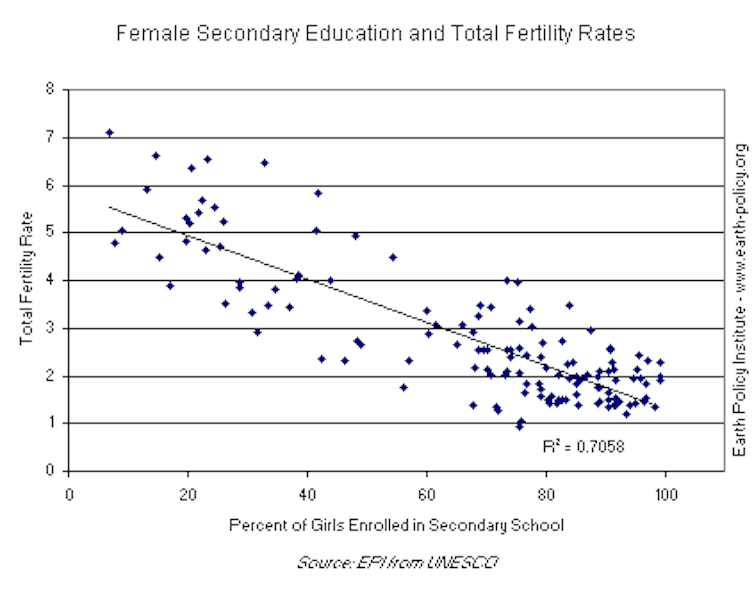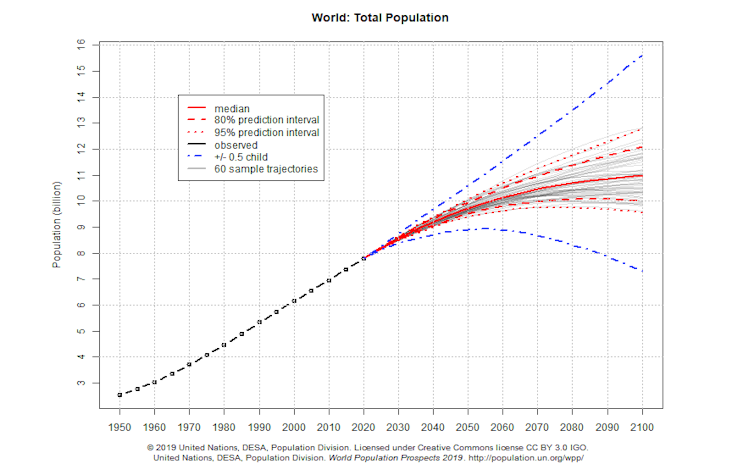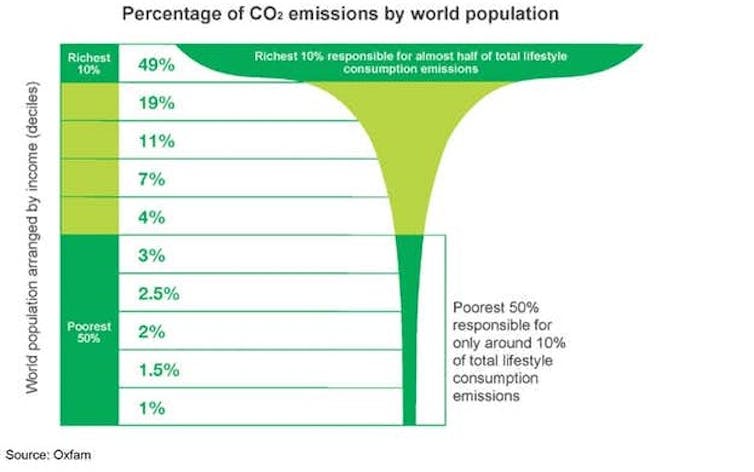
A global coalition of 11,000 scientists has come up with a plan for dealing with the climate emergency. Most of these are things scientists have been saying for a while: decarbonise the economy, eliminate pollutants, restore ecosystems and reforest, and reduce meat consumption. However, the last action point is somewhat more controversial. It calls for stabilising the global population.
The reason it is controversial is because not everyone in the world is equally to blame for the greenhouse gases that are causing climate change. Much more important than how many people are being born is where – as it is the richest countries that are responsible for the vast majority of emissions. But its in the poorest countries that populations are rising.
The global population has more than doubled since 1970. The main reason for this massive increase is something called the demographic transition. In the earlier stages of a country’s development, societies tend to have high child mortality rates that are offset by high fertility rates, leaving the population relatively stable. Couples have as many children as they can to ensure that some – on average two – survive to adulthood.
As societies develop a more stable food supply, better sanitation and widely available treatment for common diseases, mortality rates drop rapidly. But in many cases, fertility rates stay high for a while. The number of babies born stays the same, but as nearly all of them make it to adulthood, the population expands rapidly. Depending on how the time lag between mortality and fertility falling, the post-transition population can be between four and ten times higher than pre-transition, and in rare cases even more.
Many people assume that universal access to family planning and the availability of contraception are key to reducing fertility rates quickly. But the first demographic transition can be traced to the European Enlightenment, just before the 19th century – when these services were not available. Instead, it seems that women’s education up to and beyond secondary school level is the critical control of fertility.

Rising population
The rapid spread of vaccinations and the expanded food supply created by the green agricultural revolution in the 1960s meant that at its peak, global population was growing at over 2% per year. In 1950, each woman gave birth on average to five live babies. Now that the demographic transition has already happened in many countries around the world, the figure is below 2.5.
Of course, while the average birth rate is falling every year, the world’s population is still growing by 200,000 a day. The United Nations predicts that the population will rise to between 9.4 and 10.1 billion people by 2050, and stabilise by 2100. That’s another 1.7 to 2.4 billion people.

This projected rise has been the subject of much emotive debate in the context of the increasingly urgent climate emergency – which has allowed some key myths to spread.
The first is that we cannot produce enough food for everyone – according to the World Food Programme there are 821m people on the brink of starvation today. But in fact, we produce enough food to feed 10 billion people – easily enough to cover the predicted increase in population this century.
The reason there are so many people starving is because they cannot access this global food surplus – usually through lack of money. When the very poor lose their livelihoods through civil unrest, war or crop failure, they have no resources to fall back on and no money to buy the food they need to survive.
Unequal contribution
The second myth is that stabilising population is a key solution to climate change. This is misleading and unhelpful because it makes a simplistic assumption that everyone’s contribution is equal.
A third of the carbon pumped into the atmosphere to date has come from the US, and another third from the EU. Africa has contributed just 3%. So a small percentage of the world population has created the climate crisis. If you divide current emissions by individuals rather than countries, you find that the richest 10% of the world’s population emits 50% of greenhouse gas emissions. The richest 50% emits 90%, meaning the poorest 3.8 billion people in the world emits just a tenth.

If it were the richest countries whose populations were rising, population control would be a solution to the climate emergency. But it’s not – it’s the poorest.
Over-consumption by the wealthy is causing climate change, not rising population. Put another way, the average American emits nine times more CO₂ than the average Indian – so population reduction in the US would be much more effective in curbing greenhouse emissions than stabilising growing populations elsewhere.
Some may argue that new populations will eventually emit more as societies continue to develop. But the climate crisis is now and the world needs to go carbon neutral by 2050. So by the time poorer nations have developed enough to have a large middle-class, we must have developed a fully functioning global green sustainable economy and weaned ourselves off of excessive consumption – otherwise, it will already be too late.
Right answer, wrong reason
While it might not be an immediate solution to the climate emergency, stabilising the world’s population is still important. This is because human impacts go beyond just changing the composition of the atmosphere. Globally, human activities move more soil, rock and sediment each year than is transported by all other natural processes combined. We have cut down 3 trillion trees, roughly half of those on the planet, and made enough concrete to cover the Earth’s surface in a layer 2mm thick. There are now more mobile phones than people.
With the global economy set to double in the next 25 years and a population that could reach 10 billion, the potential increase in our impact is immense. The challenge of this century is to achieve a stable global population supported by a sustainable economy that reduces our burden on the planet.
Having a stable population is also essential at the country level. It allows governments to better ensure food, water and resource security for all their citizens. It also makes it easier to provide improved healthcare services and economic opportunities for a greater proportion of citizens. Imagine the huge challenges that Nigeria faces with a population that has grown by 100m people in less than 20 years.
While women’s education and universal access to family planning around the world would undoubtedly help stabilise population and bring major benefits, they are not a global solution to the problems of climate change. The roles of urbanisation, wealth distribution and consumption patterns are much more important to understand and control greenhouse gas emissions. We cannot use population as a way of blaming the world’s poor for the climate crisis.

Mark Maslin, Professor of Earth System Science, UCL
This article is republished from The Conversation under a Creative Commons license. Read the original article.

